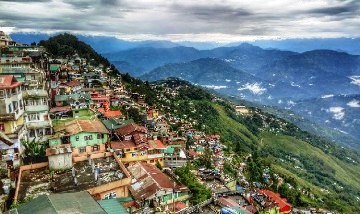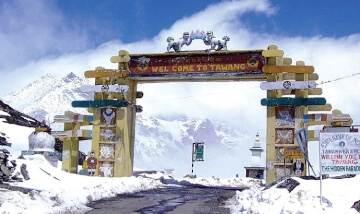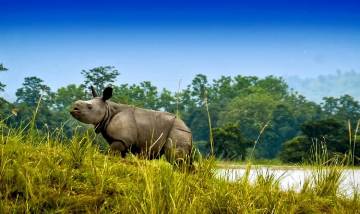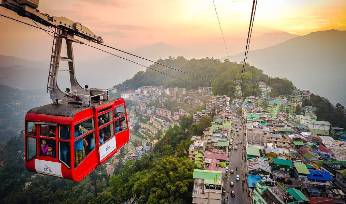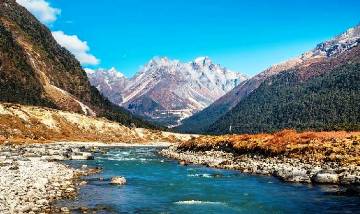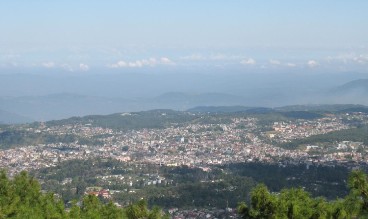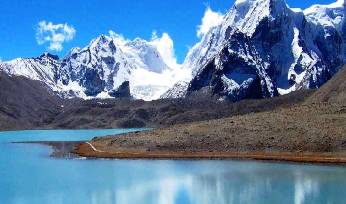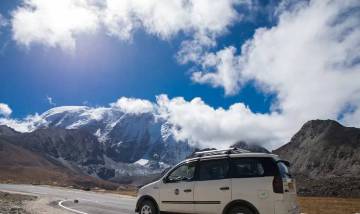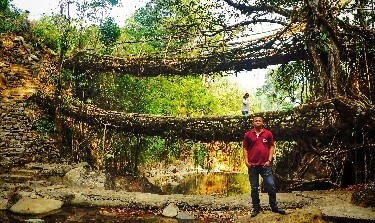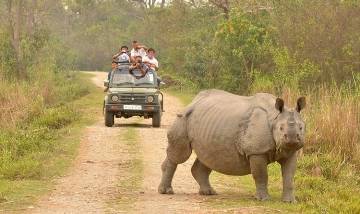Search Destination

Search Destination
17 Days North East Tribal Tour
- 16 Nights / 17 Days
- Guwahati - Kaziranga - Majuli - Ziro - Daporijo - Along - Pasighat - Sivasagar - Mon - Longwa - Jorhat - Mokokchung - Kohima - Khonoma Village - Dimapur
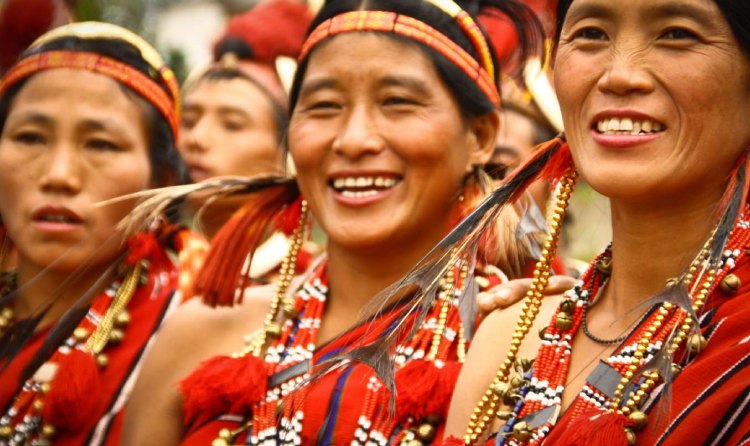
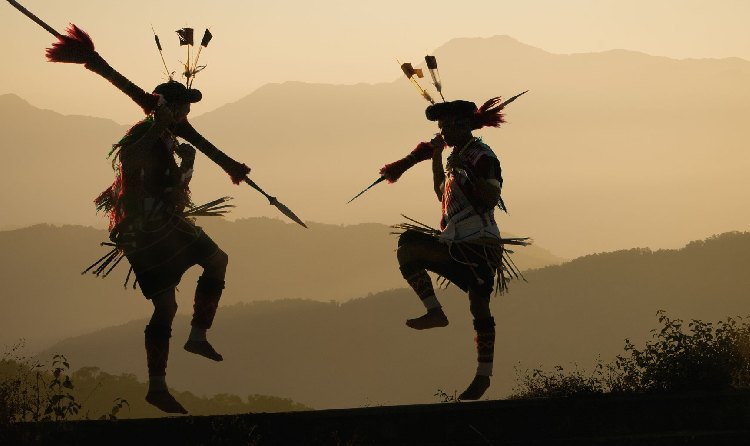
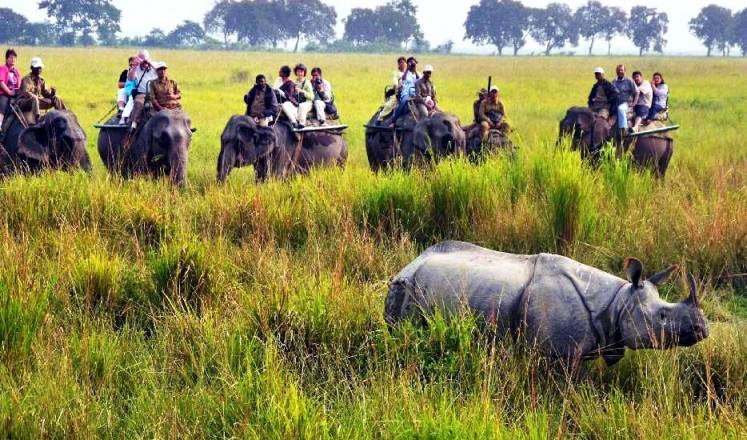
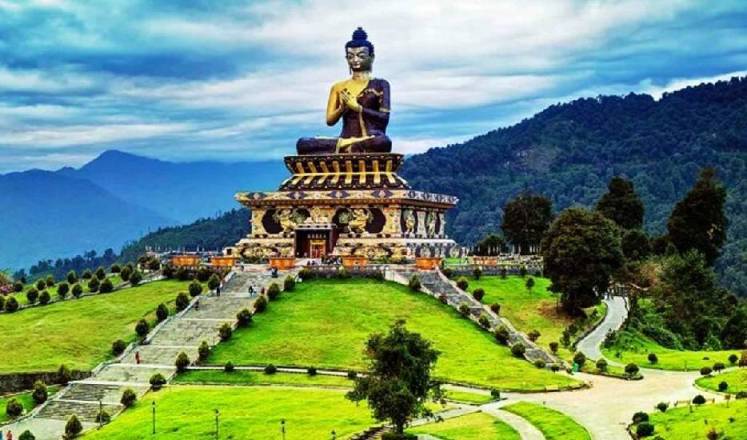
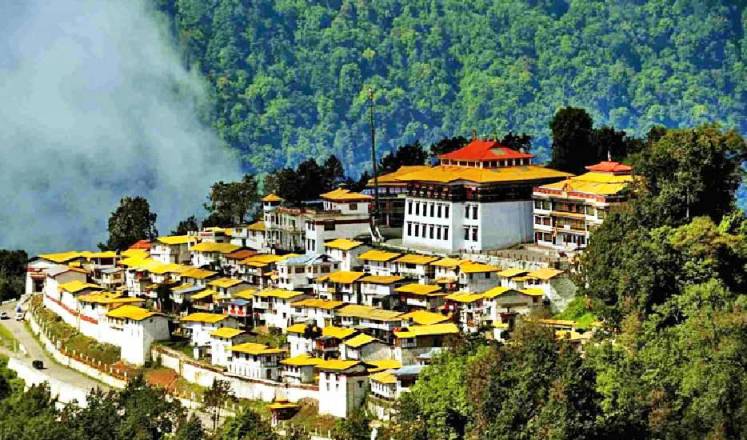
- Visit the Kamakhya Temple, Guwahati.
- Known for its one-horned rhinos, Kaziranga National Park.
- Attractions in Ziro are worth a visit.
- Visit the local attractions Along the way.
- Look into the attractions of Mokokchung.
- Shangnyu Village.
- In all Ao villages, Ungma is the oldest and largest.
- Tuophema village.
- The Khonoma tribe is known for its bravery and heroism.
- Naga Hills were occupied by the British during Khonoma gate's construction.
Tour Overview
Our 17 days Tribal North East India Tour provides an opportunity to experience the cultures, traditions, and heritage of the native people of Assam, Arunachal Pradesh, and Nagaland.
Itinerary Details
On arrival at Guwahati airport, the Tusk Travel team will meet you at the airport and a local guide will accompany you throughout your journey. Travel towards the city.
Visit the Kamakhya temple, which is the oldest center in Tantric Shaktism (it is open all day long from 7.00 am to 4.30 PM, during which it remains closed to visitors to eat lunch from 1.30 until 3.00 3.30 PM).
If you have time, go to the Umananda temple, which is located on Peacock island situated in the middle of the mighty Brahmaputra river. Dinner: Buffet dinner at Brahmaputra river cruise. Overnight stay in Guwahati.
After breakfast, in the morning then travel towards Kaziranga National Park, a UNESCO World Heritage Site. Explore - Assam tea gardens, Kaziranga Orchid Park, and bamboo and cane handicrafts shops. Experience a jeep safari within Kaziranga orchid park during the daytime.
In the evening enjoy a cultural show of Assamese Bihu / Jhumur dance in Kaziranga Orchid Park. Overnight stay in Kaziranga National Park.
Early morning enjoy an elephant safari ride inside Kaziranga National Park. After breakfast, travel toward Majuli island. On the way, visit the Negheriting temple (dedicated in honor of Lord Shiva. The temple dates from the 8th-9th A.D (Pre Ahom) constructed in the time of the Kachari ruling class).
Then, a catch machine was used to run a country boat was used to cross the powerful Brahmaputra river. Afternoon excursion to the Mishing tribal village and Pottery culture. Enjoy the sunset viewpoint. Overnight stay in Majuli island.
After breakfast, head out to take a trip to Majuli island - Auniati Satra Samaguri Satra (mask-making center for making masks). Then travel to Ziro. On the way, cross the Brahmaputra river with a local ferryboat. Ziro is an impressive plateau that is also the home of the Apatani people.
Ziro is located at an altitude of over 3,000 feet and is known for its bamboo and pine grooves. Tarin Fish Farm is a high-altitude farm for fish, and exotic landscapes, with an amazing panorama of sunrises from the hills as well as a tribal culture and place where crafts are made, such as bamboo and cane. Overnight stay in Ziro.
After breakfast, go for a walk in Ziro Valley Apatani tribes (Hong, Hari, Hija, Duta, Bula, Tajang, Bamin Michi, and Mudang Tage are eight distinctive Apatani villages located in Ziro valley. There are over 500 inhabitants living in 700 homes in Hong village, the largest village in the entire region. In each village, there are male community halls known as "Lapang".
Apatani is famous for the tattoos on their foreheads as well as their nose plugs. The basic idea is that the Apatani people are animists and revere all gods of nature. Donyi-Polo i.e the god of the Sun and the Moon. Apatani people are famous for their paddy pisciculture, also known as cum. The Apatani people celebrate the Myoko festival during March to promote the wellbeing of their communities and the Dree Festival in July for plentiful harvests as well as for community health and to deter insects).
Also, make sure to visit - the Natural Shiva Lingam (one of the biggest Shiva Lingas, with a size that is 25 feet tall as well as a circumference of 22 feet), District Museum, Craft Center, and Regional High Altitude Fish Seed Farm. Overnight stay in Ziro.
In the morning, after breakfast takes a drive to Daporijo. En-route visit - Nyishi tribal villages. Also, visit Hill Miri tribal villages. Then, you will arrive in Daporizo (Daporizo Daporizo) which is a tiny town surrounded by impressive caves and villages.
The people who live there speak different languages, including Tagin, Hill Miri, Adi, Assamese, Hindi, and English. Suspension bridges made from bamboo or cane that span the Subansiri River are a great attraction for tourists.) Visit - Tagin village of the tribe. Overnight stay in Daporijo.
After breakfast in the morning take a drive Along. On the way, visit Daporijo - Shikarizo village (one stunning Tagin village located in Daporizo) along with Menga Cave (a natural cave dedicated to God Shiva).
Also, visit the Galong Tribal Village (One of the largest tribes in the state and the Galong tribe is located throughout West Siang, southwestern part of East Siang, the southeastern part of Upper Subansiri, and in some tiny areas of the Lower Dibang Valley and Changlang districts of Arunachal Pradesh).
Then, you will arrive at Along (Set on the river's south bank Siyom at 300 meters above sea level. Along (locally known as Aalo) is a small town surrounded by the stunning natural beauty that can be a perfect location for a holiday in the summer and for activities like hiking, trekking, and fishing.)
Overnight stay in Along.
In the morning, after breakfast begin a full-day excursion Along exploring the Donyi-Polo Temple (Established in 1972, the Donyi-Polo temple in Along is the sole religious place for followers of the Donyi Polo religion throughout the state. ), Galong tribal villages (the residents of Kabu, Pobdi, and Paya villages are Galong tribesmen.
Take a closer look at their everyday life. ), Suspension Bridge (the Suspension Bridge on the Siang River is made from bamboo and local cane that shows the impressive abilities of the tribespeople. The bridge measures 60-70 meters long and connects to other hill tribes in the close regions.
Fishing in the Siang river close to the bridge is a popular pastime among the people living there. ), Ramkrishna Mission and you can also visit the local Market in Along. Overnight stay in Along.
After breakfast, in the morning then the transfer to Pasighat. In the route, you can visit The Confluence Siang as well as Siyom (Have an overview of the stunning beauty of the confluence between two rivers - Siang as well as Siyom. The Siyom River's source Siang River is Talung Tso Lake in the southern part of Tibet. The river that crosses the border is known as the Yarlung Tsangpo in Tibet, Siang in Arunachal Pradesh, Brahmaputra in Assam, and Jamuna in Bangladesh. ), Adi Minyong tribal village (Minyong, Padam and Passi are the three sub-tribes of Adi.
They have a combination of cultivating terraces and shifting. Solung is the major celebration of the Adi tribe, which is celebrated in the first week of September each year. ) A glimpse at Kekar Monying (a mountain cliff close to Rottung).
Arrive in Pasighat. Then, you can visit Adi Padam tribal village and Idu Mishmi tribal village (The people who live in the Aohali village reside as Adi Padam tribal people.) Overnight: Pasighat
After breakfast, head to Sivasagar passing through the Brahmaputra river via a newly constructed Bogibeel bridge.
When you arrive at Sivasagar you can visit the monuments of the old Ahom kingdom, including the following: Shiva Dole, Shivasagar Pukhuri (tank), Rang Ghar, Tolatol Ghar, and Kareng Ghar. Overnight in Sivasagar.
Breakfast in the morning, and then drive to Mon the home of the head hunters who were once in the past The Konyak Nagas. They have the ability to create carvings in wood, guns headgears, gunpowder, and metal accessories.
The presence of semi-traditional villages, tattooed warriors, and clothes of loin is the main tourist attraction on Mon. Afternoon visit to Mon Village, Shangnyu village, and Chui village. (sightseeings depend on the time of day). Overnight on Mon.
After breakfast, take a drive towards the Indo-Myanmar border region to visit the Longwa village.
The village is shared between the two countries, and the international border passes through the home of the village's chief. Overnight: Mon
Breakfast in the morning then heads to Mokokchung. While on the way, if time permits go to the Tocklai Tea Research Institute. Tocklai Tea Research Institute.
Tocklai Tea Research Institute previously called Tocklai Experimental Station is the most prestigious and longest-running research institute that is of its kind in the world.
Overnight: Mokokchung. (Subject to approval for permission from superior authorities).
The morning after breakfast, visit Mokokchung - Mopungchuket village & Ungma Village. These villages are the home of the Aao Nagas. Beautiful, traditional communal Naga homes referred to as Morung are located in this area.
The village's inhabitants are friendly and welcoming to visitors. The tribe is known for its many harvest celebrations throughout the year. Ungma village, which is located in Nagaland is among the most ancient and biggest of the Ao Naga villages.
It is also the second-largest village in Nagaland close to Bara Basti or Kohima village. Overnight in Mokokchung.
After breakfast, head to Kohima. On the way, visit Longkhum village (famous for its beautiful ethnic handicrafts and handlooms, and the residents of the village revere the God known as Longlanpa Tsungrem). Crossing on the way - Wokha the home of the Lotha tribe. It is surrounded by fields of terraces, bright flowers, and stunning surroundings.
The most significant attraction is the ancient stone monoliths built by tribe elders. Visit the Longsa village of the Lotha tribe. Also, visit the Tseminyu village of the Rengma tribe.
If you have time, go to Tuophema Tourist Village which is a village in Angami Naga. Additionally, the Nagaland Tourism Department has selected this village to host the celebration of the Angami Naga Sekrenyi festival that is held from February 25th to the 27th of February each year. Overnight stay in Kohima.
After breakfast, take a drive through Khonoma Green Village. The village, which dates back to 700 years old, often referred to as 'Khwunoria by its inhabitants, has a long-standing document of a heroic battle fought by Naga fighters against the British during 1879AD. The existence of a fort called 'Kuda' that translates to "a location of defense" is a distinctive feature of the village. The villager's practices involve terrace farming with Alder trees that demonstrate their expertise in managing the cultivation of terraces.
The farming process fixes nitrogen in soils that help to stop the erosion of the soil. This is a step toward eco-tourism that has intensified the purpose in the village of "Green Khonoma" in the village. Then, you can visit the Kohima the Kisama Village (Hornbill festival site), or Bara Basti, the second largest village, and the villages with the highest density of population within Asia, Catholic Cathedral, Kohima War Cemetary as well as the Sales Emporium. Overnight stay in Kohima.
Breakfast in the morning then drives to Dimapur. When time allows, go to Dimapur to see the Medieval Ruins of Kachari Kingdom, Diezephe Craft Village, and the North East Zone Cultural Centre Museum.
Be dropped off at Dimapur railway station or airport for your journey to your home or the next destination.
 Package Includes:
Package Includes:
- Accommodation in hotels of your chosen category for Single/Double/Triple occupancy.
- Daily breakfast at the mentioned hotels (dinners may also be included).
- Entrance fees for the monuments.
- Activities specified in the detailed program, such as elephant rides, boat rides, rickshaw rides, folk dances, etc.
- Private transportation throughout the trip.
- Local English-speaking guides for the sightseeing in each city you do visit.
- Assistance upon arrival and departure in each city.
- Current Government Taxes.
 Package Excludes:
Package Excludes:
- International flight airfare and airport taxes.
- Personal expenses such as drinks, tips, travel insurance, laundry, and phone calls
- Any services which are not mention in package inclusions.
You May Also Like
10 Days - North East India Tour Package
9 N - 10 D
Guwahati - Bomdila - Tawang - Dirang - Nameri - Kaziranga - Guwahati
6 Days - North East Tour Itinerary
5 N - 6 D
Dibrugarh - Sivasagar - Jorhat – Majuli - Kaziranga - Guwahati
13 Days - North East India Tour Package
12 N - 13 D
Guwahati - Bhalukpong - Dirang - Tawang - Bomdila - Tezpur - Shillong - Cherrapunjee - Shillong - Mawlynnong Village - Dawki - Kaziranga – Guwahati
17 Days - North East Tribal Tour Package
16 N - 17 D
Guwahati - Kaziranga - Majuli - Ziro - Daporijo - Along - Pasighat - Sivasagar - Mon - Longwa - Jorhat - Mokokchung - Kohima - Khonoma Village - Dimapur
6 Days - Gangtok Lachung Tour
5 N - 6 D
Bagdogra - Gangtok - Lachung - Yumthang Valley - Gangtok - Bagdogra
8 Days North East India Tour Package
7 N - 8 D
Bagdogra - Darjeeling - Gangtok - Lachung - Gangtok - Bagdogra
7 Days - Darjeeling and Gangtok Tour from Kolkata
6 N - 7 D
Guwahati - Shillong - Cherrapunji - Shillong - Kaziranga - Guwahati
8 Days - Assam & Arunachal Tour Itinerary
7 N - 8 D
Guwahati - Kaziranga - Bhalukpong - Dirang – Tawang – Bomdila - Guwahati
4 Days - Beautiful Meghalaya Tour
3 N - 4 D
Guwahati - Shillong - Cherrapunjee - Shillong - Guwahati
